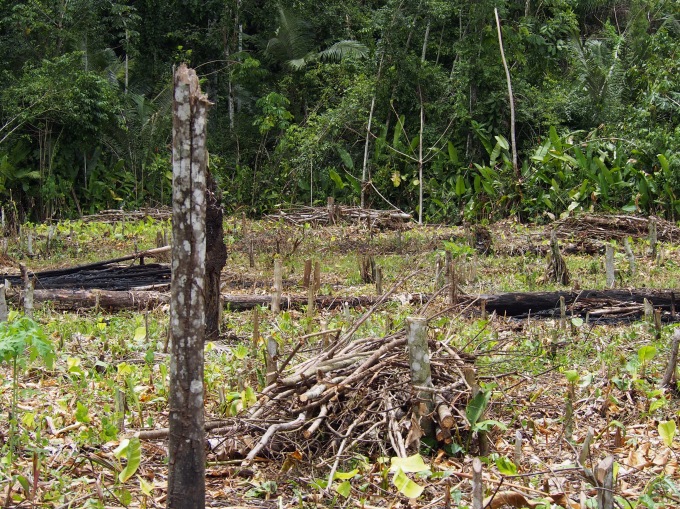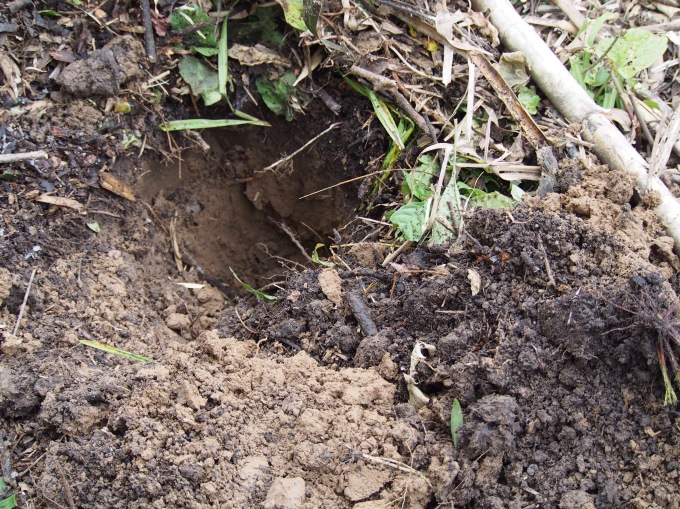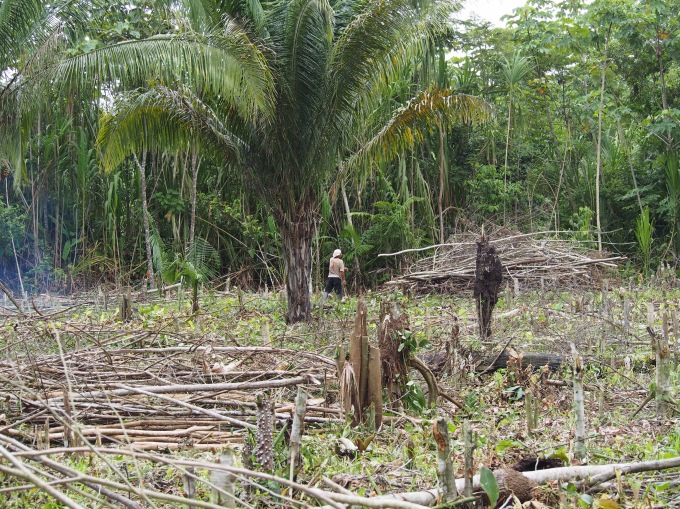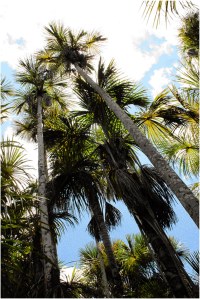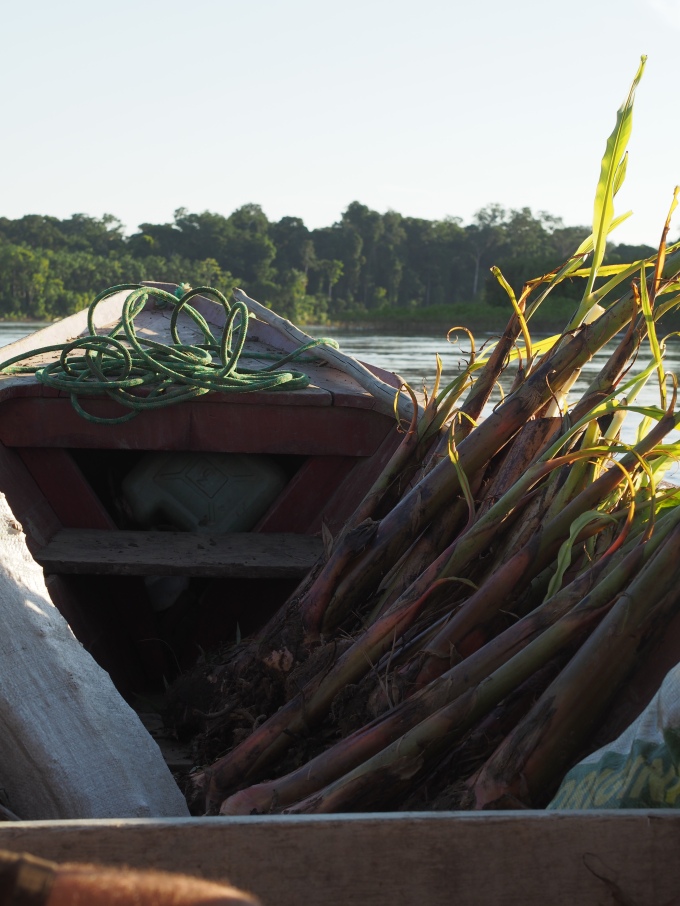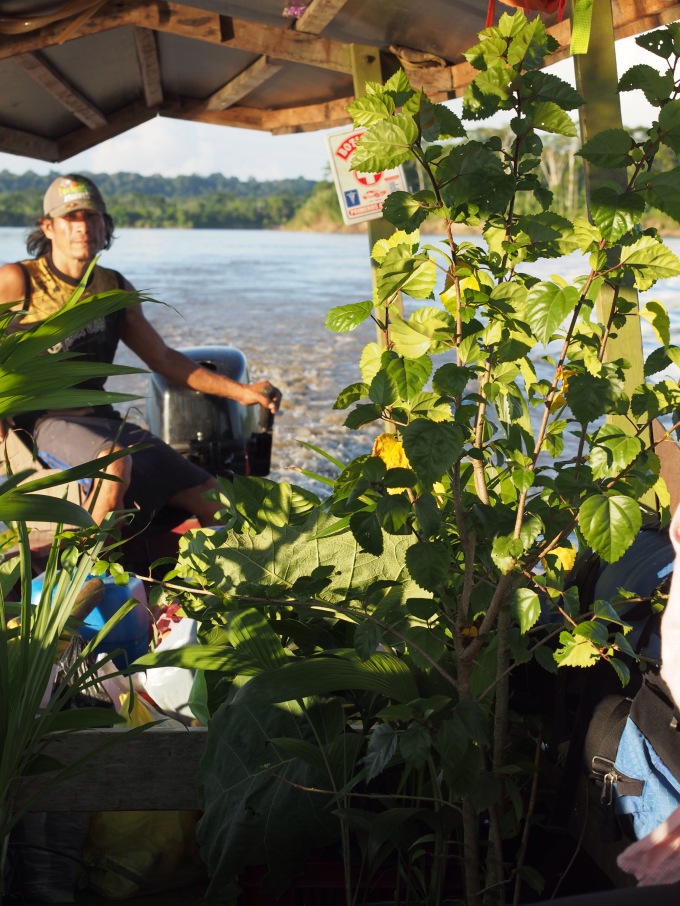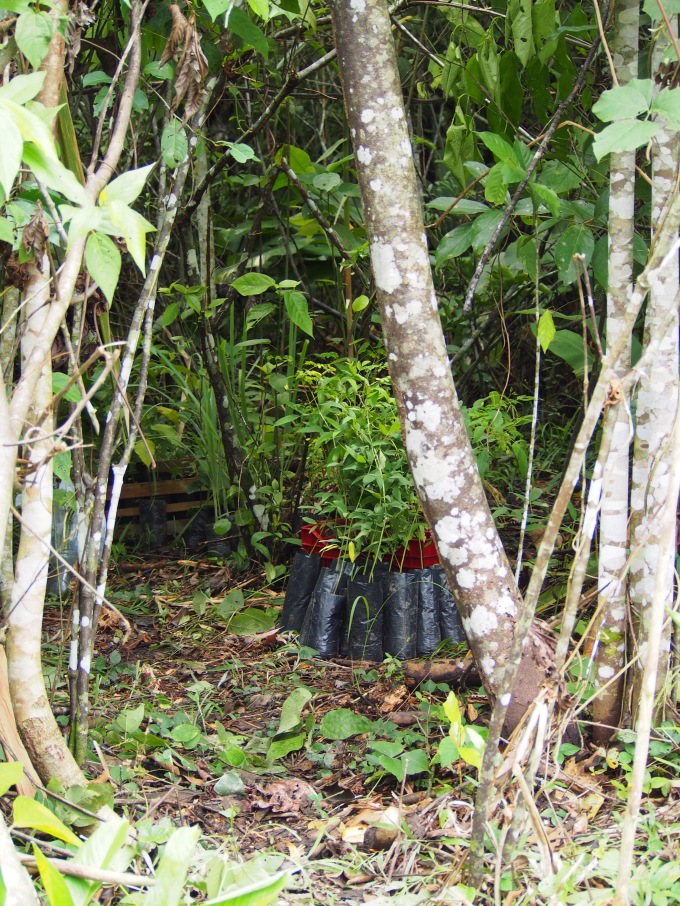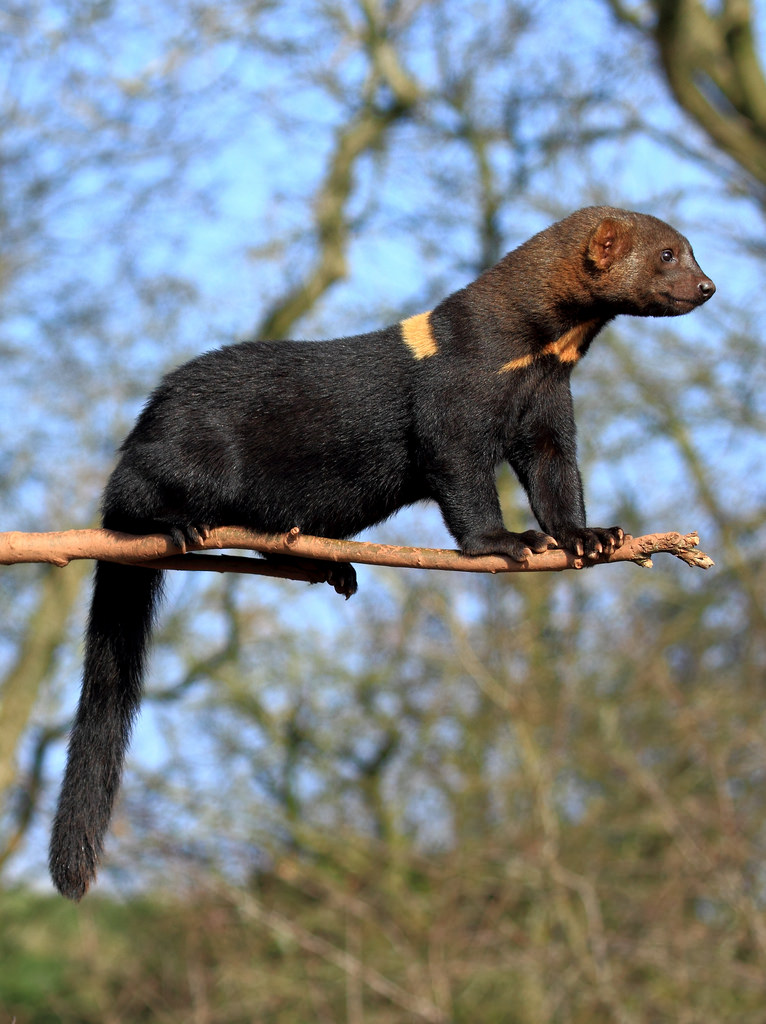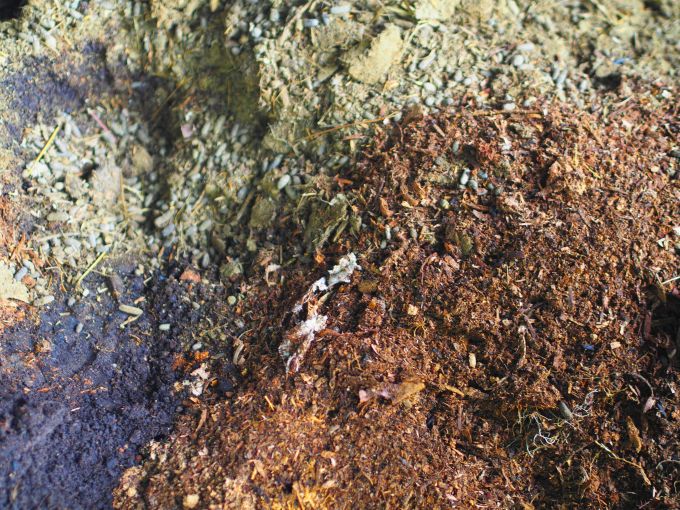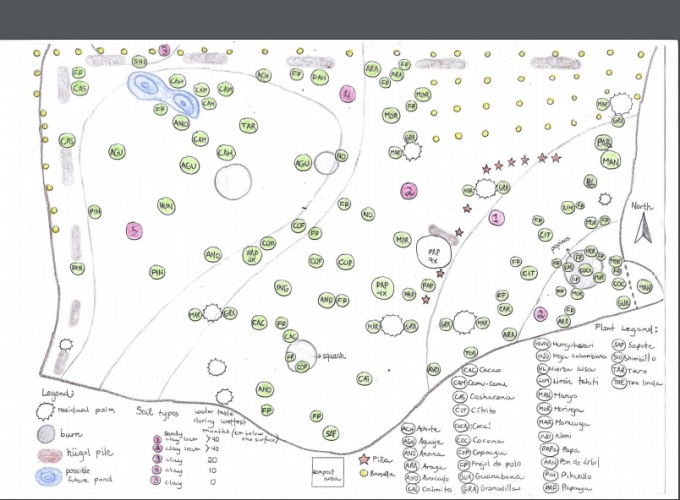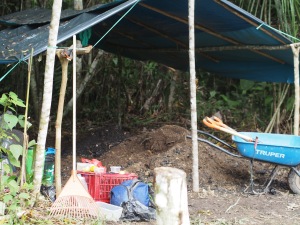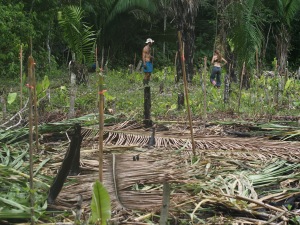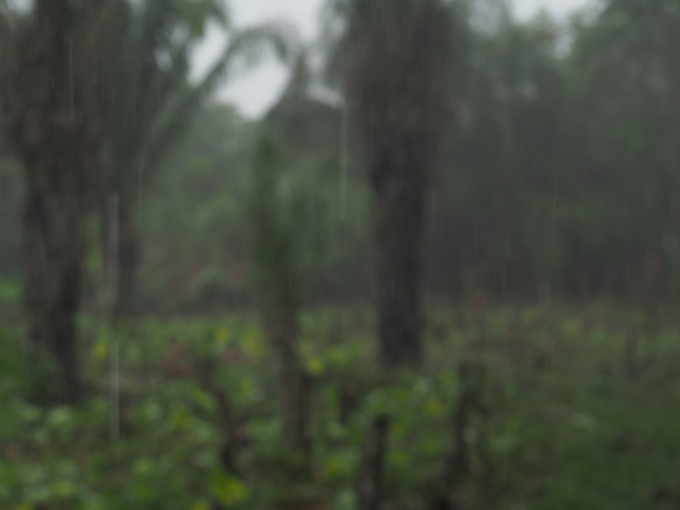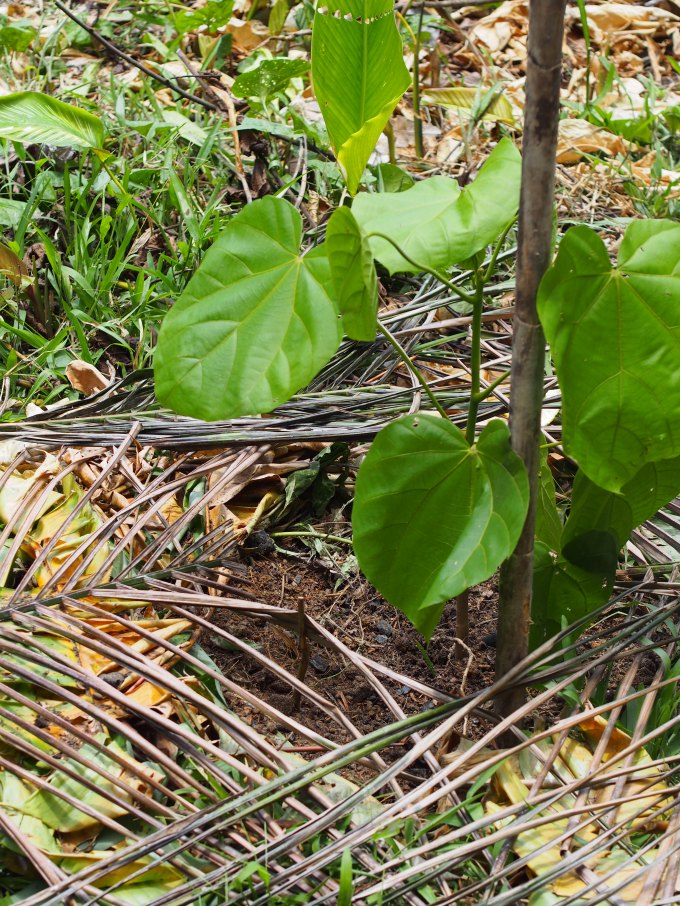Or
A reflection on terror and longing, and finding a way through the heart
----
Authors note:
I want to share my personal journey of working in the jungle. It is something hard to sum into words, and so intimate, that I feel vulnerable. But vulnerability is some of the best medicine - also a big part of working with medicine - and it means a lot to me to share. This post is originally from 2015.
----
The jungle is full of life, every tiny inch has something moving. When I first arrived more than a year ago, loneliness felt impossible since all around me was teeming with creatures and vibrant with an almost seething life-force. Even spirits live in these wild places, and will visit you if you ask, as Mariluz taught me how.
As a botanist, ecologist and gardner, to me, the jungle is the epitome of fascination. But it soon became more than that. As weeks turned to months, the more time I spent here, the more it became a mirror. Weeks of being alone with just one or two other people started the process of unpeeling from myself, as the jungle, in all of her power and wisdom, began reflecting me my most inner longings and terrors.
In the jungle, I experienced the tiring yet exhilarating dance of duality within my being - played through light and shadow, past and future, body and spirit, apathy and action, female and male, and wisdom and ignorance. Everyday became a new lesson on how to unite these desperate forces. And in the jungle, there are no places to run to that don't lead you back to yourself. So I faced myself, I faced my terror and delight. And I tried to find the center.
Terror. I say terror, and I want to explain what I mean. It's a strong word, but it's important to describe. Terror is any pure fear of what is unknown, unseeable. It is also the clawing sensation we carry, which from the inside feels as if something is terribly awry. Sometimes it is, depending on perspective. Terror is the realization of the unbridled, frenzied destruction of the earth and people. Terror is the hunger of longing that both eats and devours the self, the other, and nature. It is the unprepared meeting the great mystery, complete with dancing demons and a dose of Self hatred.
I come from the place where prairies flank the foothills of the Rockies. To describe my childhood relation with natural world, I would use the word "simple". The landscapes I knew growing up were open sky, forests of pine, spruce and aspen, the roar of 80km/hr chinooks and deafening quietness of winter - that sound of a forest blanketed by 4m of snow. It was like this for 20years, until I moved to the coast to study ecology and ethnobotany.
Seven years ago I studied in an undergraduate research station in an isolated part on the west coast of Canada. This was one of the first conscious times in my life when my relationship with nature become anything but simple, and explainable through science. I was struck by the terror of wildness. Here it was projected from me as the ocean.
That day, I went out on a boat in fine weather, on a small 4m vessel with outboard motor. We moored to gather information about an intertidal section where algae was exposed to air. It was summer solstice in the northern hemisphere and the tides low. We took a break to enjoy the water in the sun before we began to head back, but it was at this point the weather changed. Wind, direct from the open Pacific Ocean picked up. The waves grew. The color shifted as blues became grays.
And the ocean become bottomless.
Of course, we were not going to die, not that day. We made it safely back to the station. At the helm was my wild-research partner whose eyes became alive like the sea as she navigated roiling waters, determined. Though as we docked, what did not leave me was the sense of terror and peril - every hungry mouth of the wild sea snapping at me. Terror and fantasy to consume me alive. The raw power of nature, and the raw power of my story and fear, still miles from easy help.
The mother ocean is at once both creation and destruction. How can that be? Duality is one of life's great paradoxes. The jungle has also brought these teachings to me. The jungle, for me, is like the ocean. And if you have ever been here during an immense storm, or, on the most serene morning at dawn ... You will experience just some of her extreme faces. She is both the cradle of life, and the chopping board of death and decomposition. Sometimes, in the isolation when my guard was down and my layers peeled back, she even showed me how I am the cradle and how I am the knife.
In the jungle, in the wildness. I became the longing and the terror.
My terror and my longing only started to grow. Loneliness become devouring, and devouring became loneliness. To suffice, I made elaborate despachos that I learned in the Andes from Juan´s and discovered I spoke to trees. What was once considered a crazy myth inside my culture became reality. Spirits walked through my room. Trees talked back. Plants told me secrets, laughed at my ignorance and let me console in them. And all the while, as I went deeper, I hungered for the movement on the projects of my heart - work on sustainability initiatives in the region. I planned and made meetings. I hoped to make friends in the city when I had off-days to go and restock supplies, wondering as I knew, where I could find more a sense of belonging and people to work with in a team. When few appeared, and when meetings were cancelled, weeks turned to months and I retreated to the forest. The forest in the dungeons of my mind became both solace, and place of devouring. Friend and enemy. Just like me.
The forest became personified, anthropomorphized, and a mirror to the wheels of duality that turn us in circles and cycles.
On the second last day before I left (at the time of writing, I had been out for two weeks healing from dengue) we cut down a tree outside the casa grande. I made a despacho to ask it permission. I sat at his base for half an hour before I started and we talked. The immense pashaco negro told me it was over 500 years old. I said he didn't look that old, and he laughed at me, and said "rarely do you humans count the young years when us trees are just sprouts in the shade". I told him we needed to cut him down, that he was probably rotting from the inside and that in a windstorm, if he fell, he could crush and kill us. He laughed again, and said he would fall one day. I began to cry softly at his roots as I asked him to help us, and I prayed for us humans, hoping we could remember some of the good ways we once were and keep all those new lessons we've learned - all to become better. The tree became a symbol of humanity's struggle both against and with nature. As I quieted and listened, he listened back.
Then I prayed that we could survive alongside the breaking-at-the-seams Earth. That we could become stewards of the Earth, and worthy in our culture of eating the Earth's foods, seeds and animals. I started the despacho at his roots in a hole. It took 5 hours to burn to nothingness.
That night I saw a vision in one of my dreams. I was in a house, and I went to look through a window looking-glass. Behind the window was an ogre who deplored me, told me one from a series of holy-people had chosen me. A woman dressed in full Andean paqo robes stood up with her baby, she was elaborately dressed in the finest alpacas and held a magnificent wool accordion with her baby. Her hair glowed as if illuminated. She told me "the sacred is in design". I was surprised, taken aback even, and stood back from the looking glass. When I looked back through, the room was empty. The place where the ensemble of saints and holy people, and the ogre, was shuttered.
The next day when I woke up, the mood was already tense. This tree was massive, and had been on our list of dangerous and risk trees for several months. It needed to come down before the seasonal wind storms arrived, and all five of the forestry experts who had visited us as consultants agreed. It weighed many tones, and had an elegant, but unstable, arching canopy at a 90degree insertion angle to the trunk. It was one of my most studied trees, because I saw it every day from my window and had gone there many times to sit and think. Tiny insect holes bore into the naked trunk. We planned to use all the wood, with no waste. We found later, it was almost hollow inside.
The three men were ready, but obviously on nerve. The work lasted from early morning until dusk. They used heavy-cables to anchor and pull the tree on the desired path, after Miguel climbed over 40m up into the canopy to help secure them. When Claudio started the work on the chain saw, I was asked to leave the house. The risk of the tree falling on the house was not small, but the team were experts, and they knew how to work within risks to find the outcome they needed. This was a job to increase everyone's safety, and the men were serious and respectful. Still, the chance for disaster was very real. The jungle is not predictable or controllable. But there is something in design...
I readied my camera hoping to include the film in our coming documentary on artisanal logging practices here. My tripod and camera were in a far corner, far from where I thought the tree would fall. As Claudio began sawing, Miguel tightened the heavy cables. The tension in the tree shook the canopy. Everyone was praying or smoking Mapacho. Suddenly there was a ripping sound, and the cracking that still to this day fills my bones with the same terror that the ocean did. A clawing terror. The weight of wood falling through wood all falling through heavy air.
The sound of the world falling down.
I watched from a place I had ran to, and saw how the tree did a full 360 rotating from it's breaking weight. It kicked far from is broken pivot and swung towards the house. The falling came. The falling arrived. Right on top of my camera.
I will never know if the images I received when I spoke to plants, like this now fallen tree, were real or figments of my intelligence. How can you know? But many experts say we can indeed communicate with plants (see Stephan Harrod Buhner), and that we can communicate with spirits. When I asked the tree if he was ready to die, there was silence. Acceptance. Neither yes or no, just acceptance. It took me 2 days after the dream I had the night before we cut to realize I was getting a signal: The despacho from the day before had been complete, hence the Andean paqo. The blessing was full: the holy woman was like the mother Mary and her babe. She told me "the sacred is in design". The tree fell and missed our house by meters. No one was injured. My tripod was destroyed, but the camera untouched. The video was not recorded. Testament that perhaps no moment can be captured and replayed, but only experienced.
The terror remained in me for days. The feeling of the wood crashing through wood. The visual of the death. Like many images and smells of my life, especially images of death, my flesh hangs on them. I feel them in my bones, rattling in my dreams. As the tree shows, Death is nothing to be controlled. Not with cables and not with preventatives. When it's your time being close to a hospital will not save. The only way to escape is not to live. The paradox in this is terrifying, and liberating. The tree shook me deeper to my core.
It's no small wonder that since then, the next day after I left, I contracted dengue. It took several days to develop, but it was a fever that entered my body and made all the bones feel as if breaking. It was tiredness so complete I could not even sleep.
As I have laid on my back for the last 10 days, I have been asking myself daily what does it mean to be on the middle way, especially here, as I live in the jungle. The sages have written at length in some of the world´s great philosophies and religions. For me, as I have been painstakingly learning, the middle path is one where hunger is fed by the heart.
Hunger comes from many things: physical needs of the body and spirit, and non-physical desires and disgusts of the ego. My hunger has been both longing and terror. I can not count how many times I wanted to run away from my discoveries here, especially ones about myself. But I knew enough that if I ran, I would arrive again, exactly where I left-off.
Instead, I have to face it. Accept it. Hold duality as close as I can, right to my heart.
It is here, in the heart, it can be held in the wisdom of compassion. In compassion we are wise, in the heart we are present. From this place we can act wise, and build a culture that feeds.
I don't know how long it will take to fully live these teachings. Or how long it will take till I can hold my terror and my longing, just as peacefully as the mother paqo held her babe. I don't know if I ever will. But I can not run.
And so, as the trees live and fall in the forest, I stay to listen.
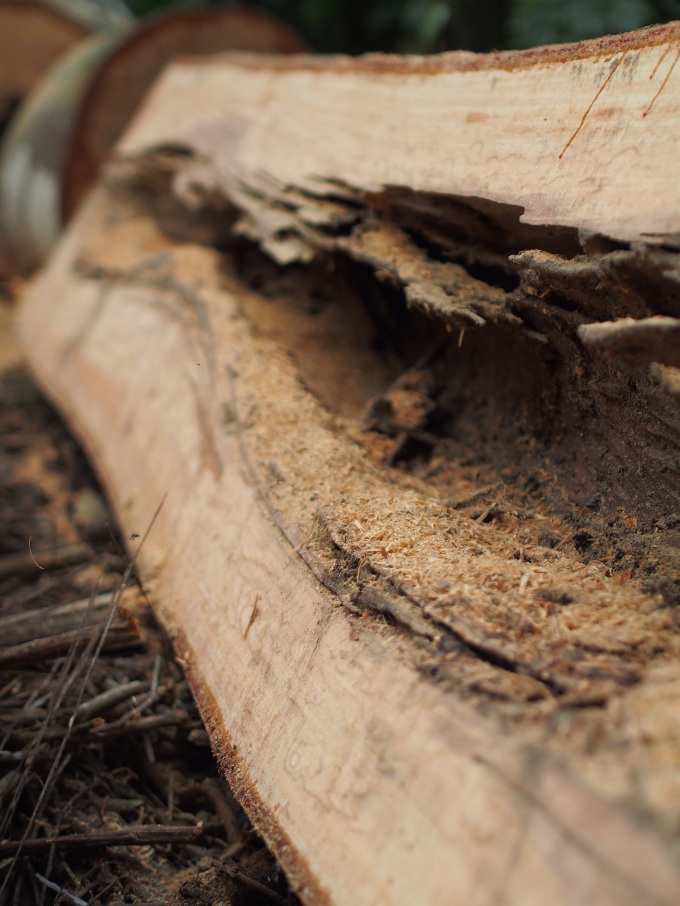
- The rotting insides of the Pashaco, cut and ready to be lumbered...
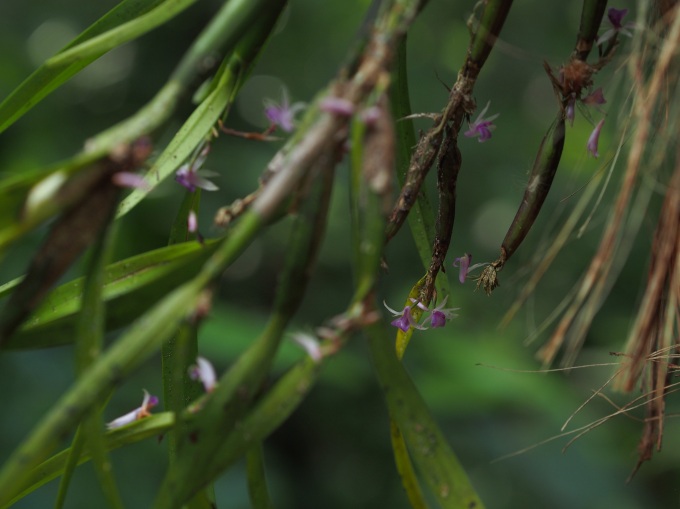
- Proof to me that my camera could still capture beautiful images, even after a tree fell on top of it (a picture of Orchids we cultivated at Canto Luz)
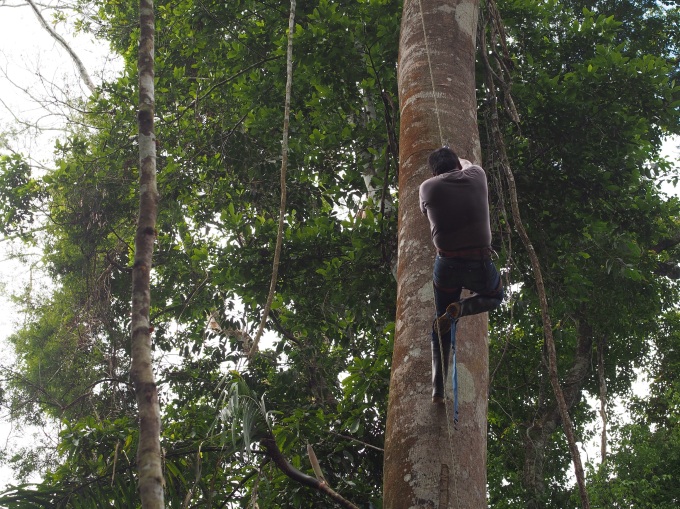
- Miguel climbs to the top limbs, 40m above the forest floor.

- The elegant canopy of the Pashaco, before he fell.
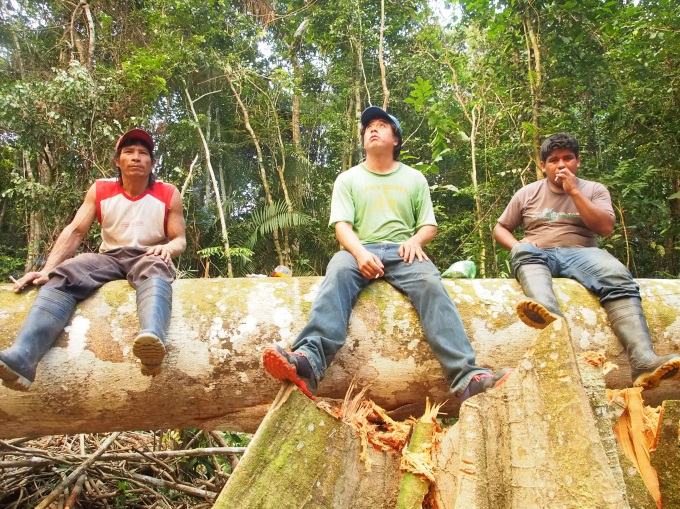
- The team holds a moment with the camera in between their silent reflections on the felling of the great Pashaco negro.






